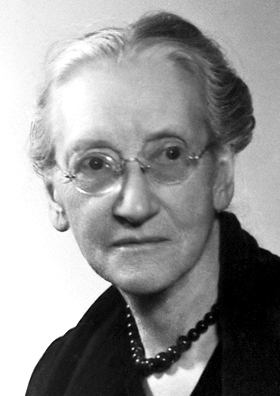Emily Greene Balch facts for kids
Quick facts for kids
Emily Greene Balch
|
|
|---|---|
 |
|
| Born | January 8, 1867 Boston, Massachusetts, U.S.
|
| Died | January 9, 1961 (aged 94) Cambridge, Massachusetts, U.S.
|
| Nationality | American |
| Occupation | Writer, economist, professor |
| Known for | Nobel Peace Prize in 1946 |
Emily Greene Balch (born January 8, 1867 – died January 9, 1961) was an American economist, sociologist, and pacifist. She was a professor at Wellesley College. Emily Balch cared deeply about social problems. These included poverty, child labor, and immigration. She also worked to help poor immigrants and reduce crime among young people.
In 1914, when World War I began, she joined the peace movement. She worked with Jane Addams from Chicago. Emily Balch became a key leader of the Women's International League for Peace and Freedom (WILPF). This group is based in Switzerland. For her efforts, she won the Nobel Peace Prize in 1946.
Contents
Early Life and Education
Emily Balch was born into a well-known family. This was in Jamaica Plain, a part of Boston, Massachusetts. Her parents were Francis V. and Ellen Balch. Her father was a successful lawyer. He even worked for a time with Senator Charles Sumner.
Emily graduated from Bryn Mawr College in 1889. She studied many subjects, especially economics. She continued her studies in Paris. There, she wrote a paper called Public Assistance of the Poor in France (1893). Before becoming a professor, she also helped people in need in Boston.
Academic Career and Social Work
Emily Balch studied at several famous universities. These included Harvard, the University of Chicago, and the University of Berlin. In 1896, she began teaching at Wellesley College. She focused on topics like immigration and how women contribute to the economy.
In 1913, she became a Professor of Economics at Wellesley. She took over from Katharine Coman. Emily Balch also worked on many state projects. For example, she was part of the first group to set minimum wages for women. She was also a leader in the Women's Trade Union League. This group supported women who were part of labor unions. In 1910, she published an important study called Our Slavic Fellow Citizens.
Activism for Peace
Emily Balch was a pacifist for a long time. This means she believed in solving problems without war. She joined Henry Ford's International Committee on Mediation. When the United States entered World War I, she became an activist. She spoke out against forcing people to join the army. She also supported the rights of people who refused to fight for moral reasons. She worked closely with Jane Addams in the Women's Peace Party.
In a letter to the president of Wellesley, she wrote about following "the ways of Jesus." She felt that the American economy was not in line with these principles. Because of her strong views, Wellesley College ended her contract in 1919. After this, Balch worked as an editor for The Nation. This was a well-known magazine about politics.
In 1921, Emily Balch became a Quaker. She found great meaning in religion. She felt that Quaker worship offered a way to share deep thoughts with others.
Leading the Peace Movement
Emily Balch's biggest achievements began after 1919. She became a key American leader in the international peace movement. She played a central role in the International Congress of Women. This group later changed its name to the Women's International League for Peace and Freedom (WILPF). Its main office was in Geneva.
The WILPF hired her as its first international Secretary-Treasurer. She managed the group's activities worldwide. She helped start summer schools to teach about peace. She also created new WILPF branches in over 50 countries. She worked with the new League of Nations on many issues. These included drug control, aviation, helping refugees, and disarmament. During World War II, she supported the Allies winning. She did not criticize the war effort. However, she still supported the rights of conscientious objectors.
Winning the Nobel Peace Prize
Emily Greene Balch was nominated for the Nobel Peace Prize by many people. These included professors, politicians, and leaders from various organizations. Five U.S. groups supported her nomination. These were the Women's International League for Peace and Freedom, the National Federation of Settlements, the Women's Trade Union League, the National Council of Women of the U.S.A., and the NAACP.
She won the 1946 Nobel Peace Prize. She received it for her important work with the Women's International League for Peace and Freedom (WILPF). Emily Balch gave her prize money to the WILPF. In her acceptance speech, she talked about the problems of nationalism. She also spoke about the need for international peace.
Personal Life
Emily Balch never married. She passed away the day after her 94th birthday.
See also
- List of female Nobel laureates
- List of peace activists
- Boston Women's Heritage Trail
- In Spanish: Emily Greene Balch para niños

